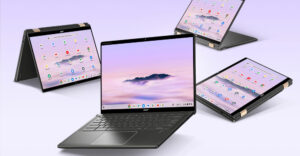
When Google opened up the source code for its Chrome operating system last month, third-party hardware manufacturers lined up plans to build Chrome-based netbooks, with availability expected in late 2010. Could Google also be cooking up plans to sell its own, Google-branded Chrome netbook at around the same time?
The blogosphere’s rumor mill is humming with purported hardware details of such a Google netbook, which were first listed by IBTimes.
Google remains elusive on the issue. “We can’t comment on hardware specifics at this point,” spokesperson Nate Tyler told TechNewsWorld. Everything Google has stated on the subject in its blog and Chromium Web site is “still accurate,” he added.
Visions of Google Netbooks’ Guts
The Google netbook will reportedly have a chipset from Nvidia’s Tegra line and be powered by an ARM CPU, which consumes less power than Intel’s Atom line.
The netbook will have a 10.1-inch TFT (thin-film transistor) HD-ready multi-touch display, according to the leaked specs. It will come with a 64 GB solid state drive, 2 GB of RAM, and the usual ancillary features such as WiFi, 3G, Bluetooth, Ethernet and USB ports, a webcam and a multi-card reader, the report states.
Pricing will reportedly fall below US$300, and the laptop’s price will be subsidized. It will be sold in two ways: directly to the consumer by Google and bundled with a wireless plan.
A Dose of Reality
Closer examination of the reported specs raise some questions. For example, if the netbook is using an Nvidia Tegra chipset, it might not actually need a separate CPU.
“Tegra is our low-power HD processor for mobile devices such as tablets, smartphones and smartbooks,” Nvidia spokesperson Bruce Chan told TechNewsWorld. “It has eight separate processors, including an ARM CPU and separate graphics and HD video processors.”
On the other hand, speculation about the hard drive and the screen size sound right on the money, judging from past Google statements. Announcing the upcoming Chrome netbooks in November, Sunder Pichai, Google’s vice president of product management, said that they’d have solid state drives (SSDs) and wireless cards, and that the netbooks would have large keyboards and screens.
How likely is Google to settle for 64 GB SSDs? Very likely, Rob Enderle, principal analyst at the Enderle Group, told TechNewsWorld. “It’s all about the price point, and SSDs with 64 GB capacity or less are vastly more affordable than those with 128 GB or more,” he explained. While SSD prices will inevitably fall, “a good 128 GB SSD will likely cost more than Google can sell the netbook for,” Enderle pointed out.
Parts of the screen technology described in the supposed specs could be easy to implement. TFT screens are widely available on laptops. Large screens for netbooks are already available, and touchscreen technology is already seen in laptops such as the Asus EEE PC T101H netbook and the HP TouchSmart TX2 notebook PC.
However, implementing multi-touch screens might price the Google netbook out of reach. “We haven’t seen many multi-touch implementations yet for netbooks, as they have been expensive,” Enderle explained.
As for WiFi, Bluetooth, audio jacks and Ethernet and USB ports, these are all par for the course. “They’re all part of the specification for netbooks, as is 3G data support,” Enderle said.
About the Nvidia Tegra
Nvidia has two products in its Tegra family, which it calls “computers on a chip.”
One is the Tegra 600 series, which offers advanced multimedia functionality and low-power design in a package smaller than a dime. This series will power next-generation of visual computing on Microsoft Windows CE-based mobile Internet devices.
The other is the Tegra APX series, which consist of applications processors. They power next-generation Microsoft Windows Mobile, Windows CE and Android-based smartphones. They are also targeted at portable navigation devices and portable media players.
However, Nvidia wouldn’t confirm reports that the Google netbooks would be powered by Tegra processors. “We don’t comment on industry rumors or unannounced products,” said its spokesperson, Chan.
Summing Up the Google Netbook
Chrome netbooks will be able to run on x86 and ARM processors, according to Google’s Pichai. Since Windows won’t run on ARM chips, that could indicate Google is planning two distinct families of netbooks.
Intel unveiled new Atom processors earlier this month that feature improved energy efficiency and integrate graphics processors and memory controllers into the CPUs. One of these, the N450, is for netbooks, but Intel has traditionally been weak on the GPU side and is facing strong competition from ARM and its partners. That could indicate Google might prefer to go with the ARM processor.
Pricing is another unresolved question — it’s unclear whether a Google netbook will be available at less than $300.
Work is needed to hit that mark, in Enderle’s opinion. “We are close to making this possible, and, with the right subsidy and an aggressive price on the SSD drive, it could be done,” he explained.




















































